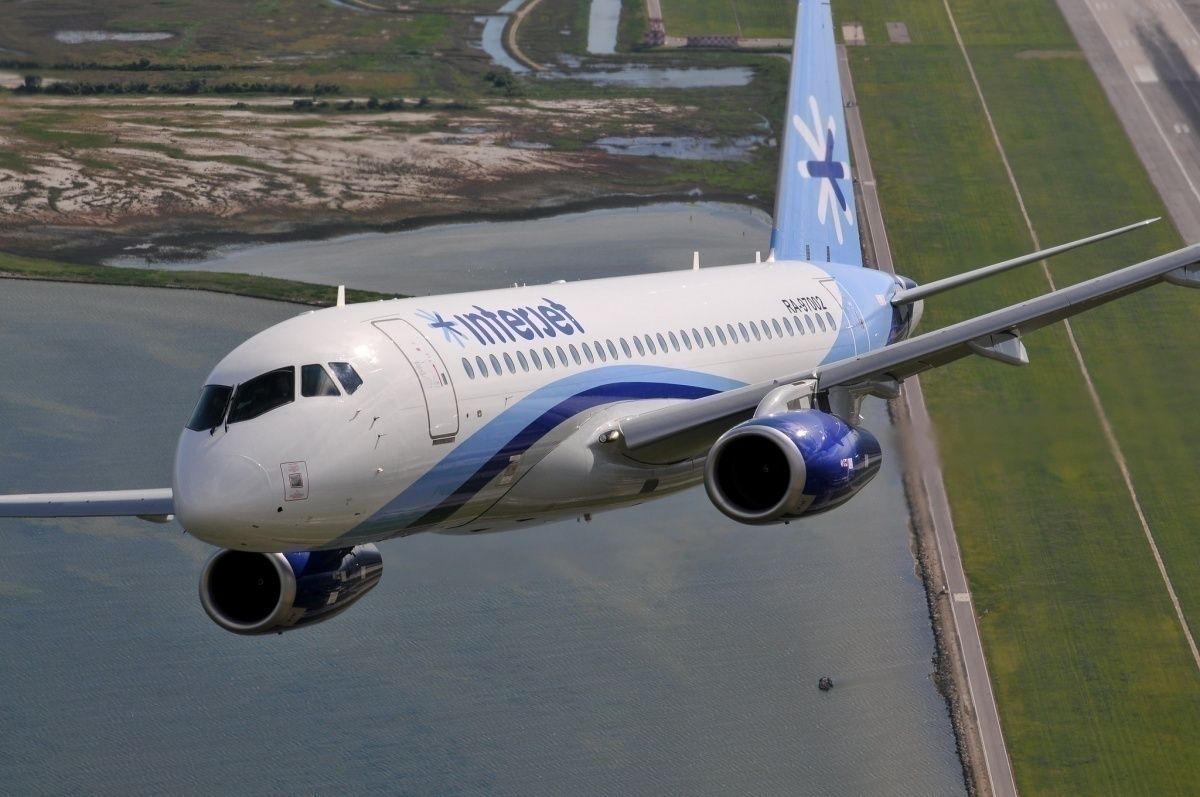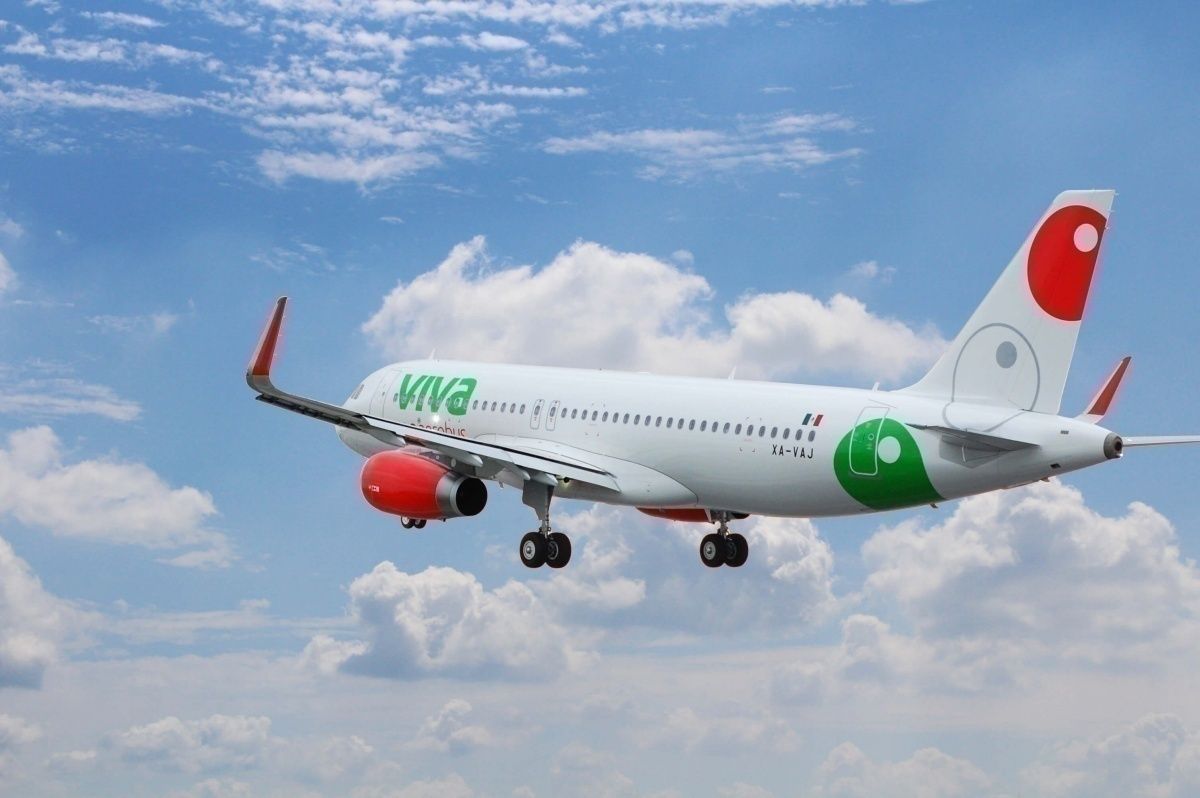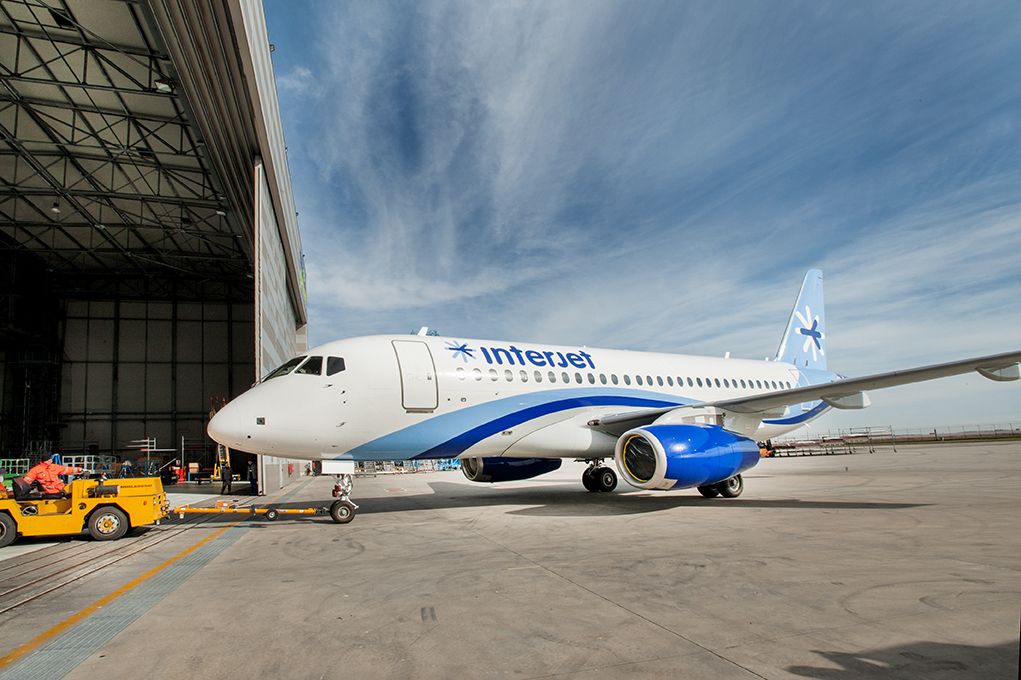Yesterday, a journalist in Mexico broke this news: the Government might look favorably on a merger between Interjet and Viva Aerobus. He said this might be the only way to save Interjet. So, is it time to panic?
First things first: Viva Aerobus denies there is even a possibility of fusion. Interjet, on the other side, said that there is a possibility of hearing new proposals. But as of right now, they are not negotiating with anyone.Â
Interjet has debts everywhere
We know Interjet has debts. As we published before, the low-cost carrier owes money to Sukhoi Civil Aircraft (SCAC) as well as banks, export credit agencies, and other suppliers. Interjet has a fleet of 22 SSJ100 aircraft and only operates between four and seven of them. The others are parked, some of them even cannibalized for spares.Â
But this is just one issue. In Mexico, there are rumors that the airline owes money to the Government. Last year, the fiscal authority confirmed that Interjet had defaulted on its payments. This went to court and the carrier won the case.Â
Then, earlier this year, OMA (an administrator of 13 Mexican airports) said that it would cancel every credit given to the airline due to a lack of payment. Interjet denied this and said,
“The comments are part of a constant and systematic attack against Interjet."
Should Viva Aerobus absorb another low-cost carrier?
Viva Aerobus is an airline that was created under the model of Ryanair. This low-cost carrier, founded in 2006, is one of the main operators in Mexico. Â
By the third quarter of 2019, among the main airlines in Mexico, only Viva and Volaris had net profits in their sheets. But that doesn’t mean Viva Aerobus should absorb Interjet.Â
The Mexican journalist said that the now-denied fusion would be possible thanks to the great management done by the administrators of Viva Aerobus. He even said that the business model of Interjet is collapsing. Still, I don't think Viva has too much to gain from a possible acquisition. The low-cost airline already has a strong operation in Mexico, the USA, and Cuba. It also has a solid point to point model.Â
Let’s also add that other names have been linked to a possible acquisition of Interjet. The first one is Emirates (that recently signed an interline agreement with Interjet). But also American Airlines and Qatar Airways are possible candidates.Â
What gap would Interjet leave if it disappears?
Currently, Interjet operates 42 domestic routes and 45 international. Of the three low-cost carriers in the country, it is the most focused on international destinations. Interjet even beat Aeromexico in the Ecuatorian market (albeit, Aeromexico had to exit this market due to the MAX crisis).
“Our international business grew 26 percent year-over-year and our overall passenger traffic increased by seven percent,†said the airline.
Also, Interjet has launched a new strategy for 2020. The US is the key international market for this year. And, in the domestic sector, the carrier is operating hourly flights between Mexico City and the three main hubs in the country: Cancún, Monterrey, and Guadalajara. The passengers shouldn't lose this flexibility.Â
In 2019, the airline transported over 15 million passengers, with a load factor of 85%. During the year, Interjet launched routes from Mexico City and Cancun to Medellin and Cartagena in Colombia, as well as Guayaquil and Quito in Ecuador. It also connected Cancun and Lima, Peru.Â
As well, the carrier launched the routes Acapulco-Cancún, Toluca-Zihuatanejo, Cancún-Oaxaca, and Toluca-Huatulco, separating itself from the congested operation in Mexico City Airport, while connecting touristic hubs. This is a smart strategy due to the lack of space to operate any more flights in Mexico City.Â
What do you think? Is Interjet in deep waters? Let us know in the comments.



